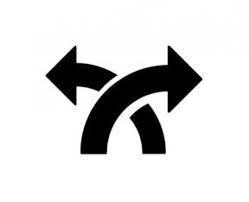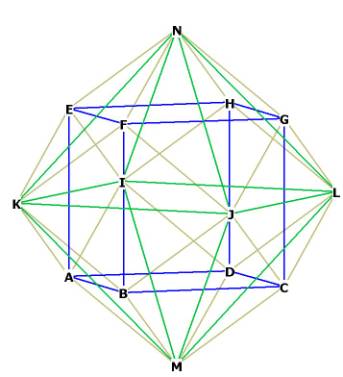|
(2017
midterm assignment) Model Student Midterm answers 2016 (Index) Essay 3: Web Highlights |
 |
Katie
Morin
11/9/2017
Forms of the Future: An Analysis of Three Alternative Future Essays
In learning the three basic subgenres of futuristic
literature—apocalypse, evolution, and alternative futures, I have found the
alternative future narrative to be most complex and difficult to grasp. In
reviewing three Model Assignments of students discussing the subgenre, I have
deepened my understanding of the genre in comparison to its counterparts, which
aided in the composition of my own assignments, especially in my analysis of
Allison Baker’s “Better Be Ready ‘bout Half Past Eight.”
In
her Midterm Essay 1, entitled “The Three Narratives: Hand-in-Hand,” Nikki Jones
discusses “Better Be Ready ‘bout Half Past Eight”:
“The subgenre of this short story can be
categorized as alternative future but it also has complimentary themes found in
evolutionary literature. The main difference, however, is that it does not deal
with alternative timelines on a large scale but with alternative future on a
personal scale and instead of an entire era evolving, it is more about Byron’s
growth and evolution on a mental, emotional, and physical level” (2016).
I feel this statement is nicely put and reading this before writing my
own Essay 1 helped me to better develop my own ideas. Her inclusion of “personal
scale” immediately made me think of the time scales we have been dealing with
for our first two subgenres (linear and cyclical). I thought this correlation
was especially interesting because one’s personal scale can be either
predictable or unpredictable and is also limitless—much like the alternative
future genre as a whole. Initially, after having read “Better Be Ready,” I
thought it would be best to skip it altogether and write about “Mozart in
Mirrorshades” since it is more obviously a work of alternative fiction. However,
“Better Be Ready” serves as proof that the genre is so incredibly versatile and
is not restricted to just time travel or otherwise physically escaping one’s
present reality.
Part of the reason why “Better Be Ready” is so relatable is because
nothing out of the ordinary or too far-fetched happens throughout the narrative.
Nikki Jones’s Essay 2 Final Exam, “Science Fiction: A Tangible Future in the
Classroom” reflects this sentiment as well, when discussing
The Time Machine. She compares the
Traveller’s experiences to those of a high school student curious about how
their own future will pan out. She writes that high school students should
“understand the curious nature of the time traveler and what compels him to
travel into the future because they can relate to him wanting to know for
certain what the future holds, only on a larger scale than theirs” (2016). This
is something I touched on in my own essay, especially when analyzing the
believability of a given work and how well it may or may not be received given
how realistic and/or relatable it is. If a piece is too simplistic it runs the
risk of being seen as dull and uninteresting, but if it is too extraordinary and
unbelievable, readers are less likely to relate to it and can become
disassociated. Being able to make these connections to one’s own life
experiences is oftentimes important because it aids in the deeper understanding
of a piece’s meaning, much like Jones states.
Finally, Rebecca Dyda’s Essay 1, “Discovering the Truth,” offers a more
detailed description of “Better be Ready,”—one that argues that the alternative
future narrative is a combination of both apocalyptic and evolutionary
subgenres:
“The
alternative theme takes the standard beginning middle and definite end found in
apocalyptic novels, the gradual change found in evolutionary novels, and
branches off into a texts filled with changes and alternate plausible endings.”
Dyda, much like Jones, explains how both Zach and Byron have two options:
to either live as men or as women, and their decision will dictate one of two
alternate futures in which they will live:
“Both
of these characters create two separate forms of reality for facing what seems
to be the same identity crisis. Both men seem to find some truth in themselves,
ultimately making their own decisions on how to deal with this truth. Like in
our Apocalyptic and Evolutionary themed texts, this texts found truth also sets
the mood for the theme of the novel. In Better be ready at about half past
eight, the characters find their own sense truth in their lives. This
ultimately puts together two completely different timelines of what could have
happened in each case.”
I had not thought of it this way, because I believe that the mere thought
process Byron is experiencing classifies the narrative as a work of alternative
fiction, and whether or not he chooses to live as male or female seems to be of
little importance. However, this just further confirms how versatile the genre
is, and how it can be interpreted multiple ways, either psychologically or
physically.
Each of the three Model Assignments aided in my comprehension of Baker’s
short story. Initially I struggled in trying to interpret the piece on my own,
but reading the thoughts and opinions depicted in each of these essays further
strengthened and developed my own ideas and understanding of a literary genre
that was new to me before taking this course.
 |
 |
 |
